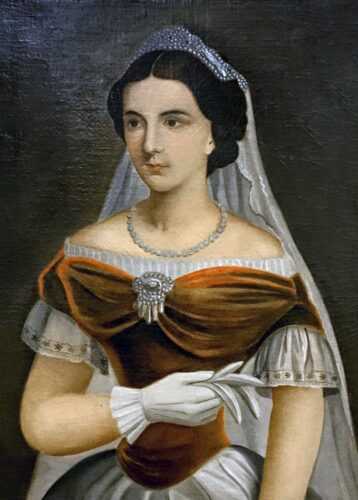Maria Sofia of Bavaria
Biography of Maria Sofia of Bavaria, the last Queen of the Kingdom of the Two Sicilies and wife of King Francis II of Bourbon
The origins of Maria Sofia of Bavaria
The kingdom
On 8 January 1859 the wedding by proxy. She then journeyed her to the new Kingdom of which she became queen, five months later, at only seventeen. The second war of independence was underway, and her kingdom was in serious trouble. Francesco understood, in the tragic moment in which they found themselves taking the reins of the nation, that he could count on his wife. He shared with her the amnesty for political prisoners and the abolition of the filing of suspects of liberalism; they entrusted the leadership of the government to the constitutional Carlo Filangieri. The goal was to restore confidence in the intelligentsia and revive the country. The queen mother considered the lifestyles of the young sovereign unbearable. It was unacceptable for her that the queen smoked in public, that she went horseback riding in trousers (both things had already been customary for Maria Amalia), that she swam in the sea of the gulf, that she fenced, that she drove six horses through the avenues of Capodimonte and that he gave himself, even for fashion shoots for magazines, to the lens of photographers. Her beauty, ease in relationships, little attention to protocol, the sense of freedom that had accompanied her since childhood, made her an icon of modernity and at the same time earned her criticism from more conservative circles than they spared no gossip.
The end of the Kingdom of the Two Sicilies
When in Gaeta Maria Sofia and Francesco defended the Kingdom, now lost, with all their strength, she took the field and became the soldier queen. She put on a personal uniform. Over a black suit, with a masculine cut, she placed a black cloak, the kind used by mountaineers, which she defined as “my most beautiful royal cloak”. She was wearing tall black boots with spurs. On her head a black hat in the shape of a cone with wide brims, in the style of the Calabrians. She moved to places of combat bringing comfort, helping the wounded. When all was lost they were welcomed in Rome, by the pope, in the Quirinale palace. Here they set up a government in exile. They had only one daughter, Maria Cristina Pia who died of pneumonia at just three months old. The last years of her life were spent in Monaco, here she died at the age of 84, on January 18, 1925. Her remains, in 1984, were taken to Naples, in the basilica of Santa Chiara. The myth of her remains unchanged.
The exile
When all was lost they were welcomed in Rome, by the pope, in the Quirinale palace. Here they set up a government in exile. They had only one daughter, Maria Cristina Pia who died of pneumonia at just three months old. He spent the last years of his life in Monaco, where he died at the age of 84, on January 18, 1925. His remains, in 1984, were taken to Naples, to the basilica of Santa Chiara. The myth of her remains unchanged.


